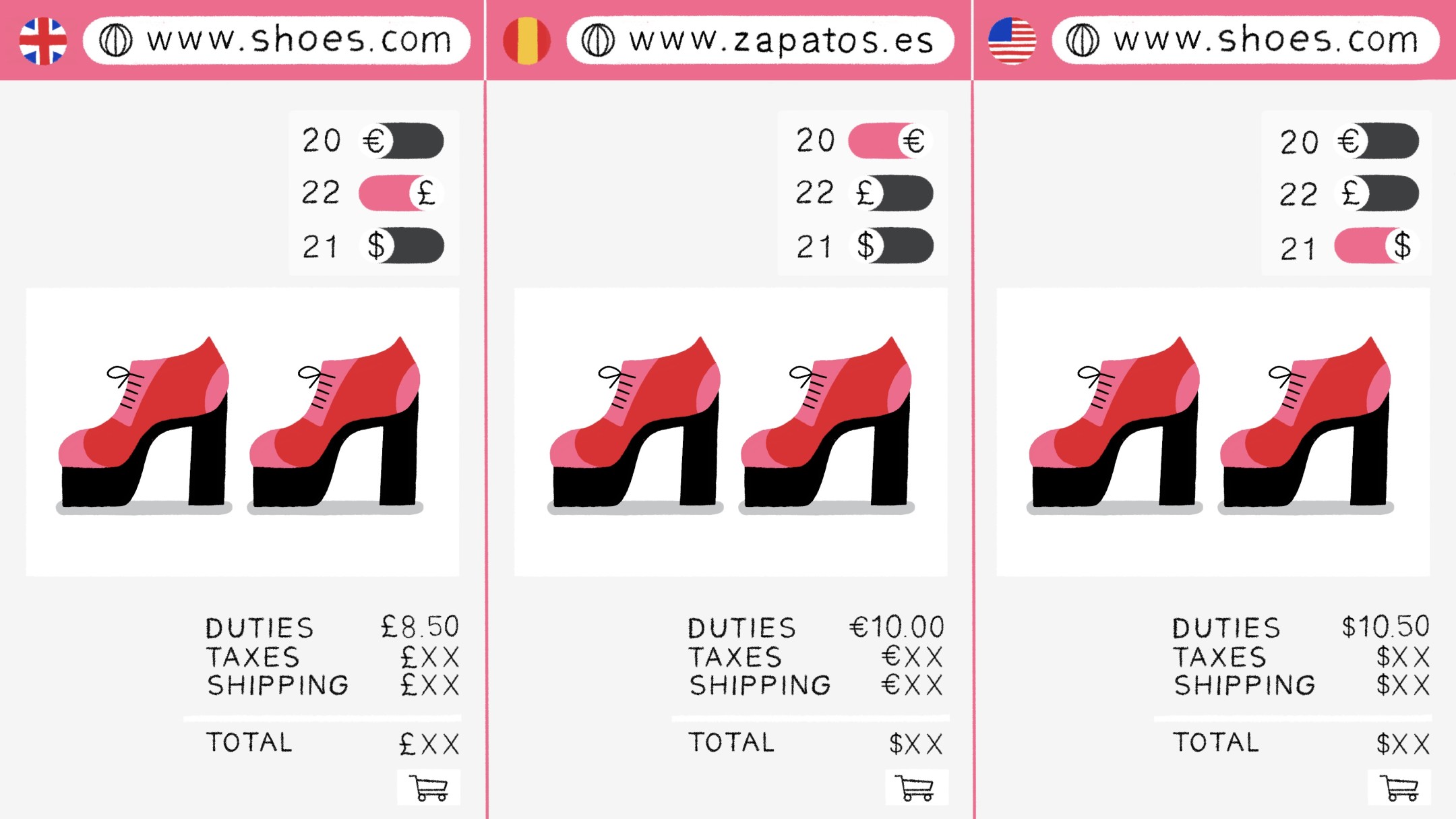The beauty of ecommerce is that you can sell to global customers, regardless of how close they are to your headquarters. Drive them to your online store, take their payment, and ship their order. Recoup profits and repeat the process.
If only it was that simple.
International shoppers often fall at the first hurdle. They visit a generic website using a .com domain, where prices are shown in US dollars and website copy is written in English. It’s not personalized to them.
And because most people prefer to shop in their own language using their own currency, international shoppers exit in search of a brand that allows them to do so.
Localizing your ecommerce website prevents that from happening on your online store. You’ll automatically personalize the currency, domain, product pricing, and imagery shown on your ecommerce site, depending on the location of each visitor.
This guide shares how to do it.
Table of Contents:
- What is ecommerce localization?
- What are the benefits of ecommerce localization?
- What does an ecommerce localization strategy look like?
- How to localize an ecommerce website
- Ecommerce localization best practices
What is ecommerce localization?
Ecommerce localization is the process of taking an online store’s existing content and personalizing it for a different market.
A US-based direct-to-consumer brand expanding into Mexico would need to build a localized version of its website—largely with Spanish website copy and images of Mexican consumers, and accepting popular payment methods of shoppers in that region.
Petal & Pup is an Australian fashion retailer that found customers in New Zealand, the United Arab Emirates, and Canada. It localized its ecommerce store, personalizing website content to speak directly to customers in each region. International sales now represent 20% of total revenue for the Aussie fashion brand.

What are the benefits of ecommerce localization?
Instead of having a one-size-fits-all store, localizing your ecommerce website offers the following benefits to online retailers:
- Competitive advantage. Data compiled in Shopify’s Future of Commerce report shows 47% of consumers say having a presence in their local market was a significant factor in choosing which brands they shop from.
- Increase market share. Take your competitors’ customers and gain market share—a strategy that pays dividends over time. The more people who know about your products, the less it costs to acquire new customers. Word of mouth takes over.
- Tap into the global market. Take a slice of the $5.5 trillion online shoppers are expected to spend in 2022 with a localized ecommerce website.
- Build an international search presence. Search engines like Google have one goal: to showcase the best results for a user’s query. Language, currency, and content relevancy all play a role in that—each of which is personalized on a localized website.
- Fewer cart abandonments. Most people abandon online shopping carts because extra costs were too high or they couldn’t see the total order cost upfront. Dynamic pricing is part of a localization strategy. Customers see the price they’ll pay in their own currency upfront, reducing the chances of them abandoning an online purchase at the checkout.
- Faster delivery for customers. Modern consumers expect free, fast delivery from brands. An important part of the localization process involves regionalizing inventory, so products go from your warehouse to a customer’s address in as little time possible—even if that’s miles away from your HQ.
- Easier personalization. Personalized ecommerce websites see 10% to 15% higher conversion rates and 20% higher customer satisfaction rates. That’s easy to achieve when you’re personalizing website content based on a potential customer’s location.
- Improve conversion rate. “Ecommerce localization has increased our engagement and website traffic significantly, which in turn has increased our profits,” says George Pitchkhadze, CMO at Keyzar Jewelry. “I also find that we have a much wider reach within our targeted market/customer base.”
- Faster growth. Research shows that companies with deep localization frameworks grow at a faster rate than those who don’t. Meet your growth goals faster with a flexible website that personalizes content based on the region of its visitor.

“Entering a new market provides the opportunity for immense growth, but only if done with care and the intention to speak directly to the audience within said market,” says Stephen Light, co-owner and CEO of mattress company Nolah.
“Tailoring both your product and content to match these customers’ unique needs, customs, interests, and more is key to communicating with them in the most human way possible and eliminating any possible barriers between your brand and a new audience.
“Reaching new audiences broadens a brand’s horizons and can see massive increases in sales and revenue,” Stephen says. “An ecommerce store with local language, currency, content, and more is vastly more likely to make a sale.”
What does an ecommerce localization strategy look like?
Domain
The .com version of a website is the default domain extension for global businesses. It’s used by more than 37% of all domains. But some international shoppers place more trust in brands with a top-level domain that’s specifically for their country; 92% say they have concerns about purchasing from unfamiliar websites.
Show you operate in different countries with domain structures specific to each region, such as:
- Subfolders (brand.com/es-mx)
- Subdomains (mx.brand.com)
- Country-code top level domains (brand.com.mx)
Fashion retailer High Fidelity took this into consideration when planning its launch strategy for the US. Marketing manager Anthony Atkins says that going with the .us country-code top level domain (ccTLD) “has helped improve conversion. It has given visitors a boost of confidence, since they recognize the address to be local and feel it's easier to complete a transaction in their local region, language and currency.”
Localizing our Shopify store with a ccTLD has been a great way to enhance our credibility in our market.”
—Anthony Atkins, marketing manager at High Fidelity
Redirect international shoppers to their localized ecommerce store with the Geolocation app. Allbirds, for example, uses my UK-based IP address to display this notification when I land on its .com website. The pop-up redirects me to the localized UK version at allbirds.co.uk.

Shopify Markets handles the hassle associated with a multi-domain SEO strategy. You’ll have sitemaps for each domain and hreflang tags to tell search engines which version they should show to international searchers.
Currencies
Price is a major stickler in the purchasing process. “Can I afford this item?” is a question that loops in your target customers’ mind when purchasing items online.
Say you’re a US consumer shopping on a German ecommerce site. A product you’re interested in is listed at 59.99 euros. Do you know the amount you’ll be charged in your home US dollar currency?
Even if shoppers do know international exchange rates, consumers are often charged extortionate currency conversion and transaction fees by their bank. It’s those extra fees that cause friction throughout a buyer’s purchasing decision, resulting in a third of Shopify shoppers being likely to abandon their online carts.
People want to pay in the local currency that’s most familiar to them. It’s why ecommerce sites that localize currencies on product pages see a 40% increase in conversion rates.
Josh Palmer experienced this first-hand with Language Posters, a DTC brand that sells framed posters in eight different languages. The store sells a high volume of orders to customers outside the US—Josh estimates its products have been shipped to over 50 countries worldwide.
“Internationalization for the website has been very important,” Josh says. “That being said, maintaining multiple websites in different currencies or domains would have been unmanageable.”
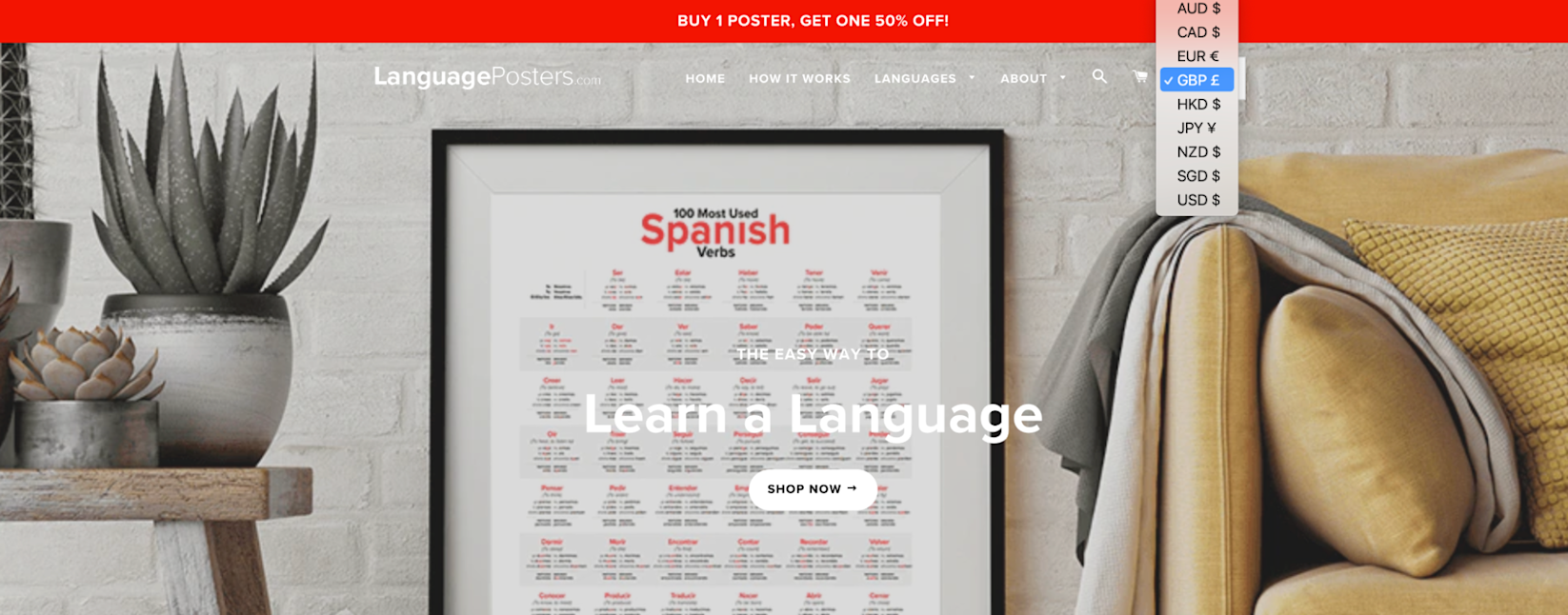
Josh relied on previous web development skills and Shopify: “Specifically, I added a currency selector to the header of the site, which redirects users when changed to ?currency=USD (for example), and then added some Javascript to detect the user's country and automatically select the appropriate currency.
“Of course, they still have the option to manually change it,” Josh says. “But at this point, probably at least half of my transactions are foreign currency transactions.”
Do this for your ecommerce business with Shopify Markets. Automatically convert storefront prices to more than 130 international currencies based on the latest foreign exchange rates. Neither you nor your customers miss out on ecommerce transactions due to currency conversion uncertainty.
Payment methods
It’s not just currencies that change cross-border. Payment preferences vary by country.
Digital payment systems (such as Shop Pay and Apple Pay) reign supreme in China and Western Europe. Customers in India and Eastern Europe, however, prefer cash on delivery. In the Netherlands, almost seven in 10 of transactions are made using a domestic payment method called iDEAL.
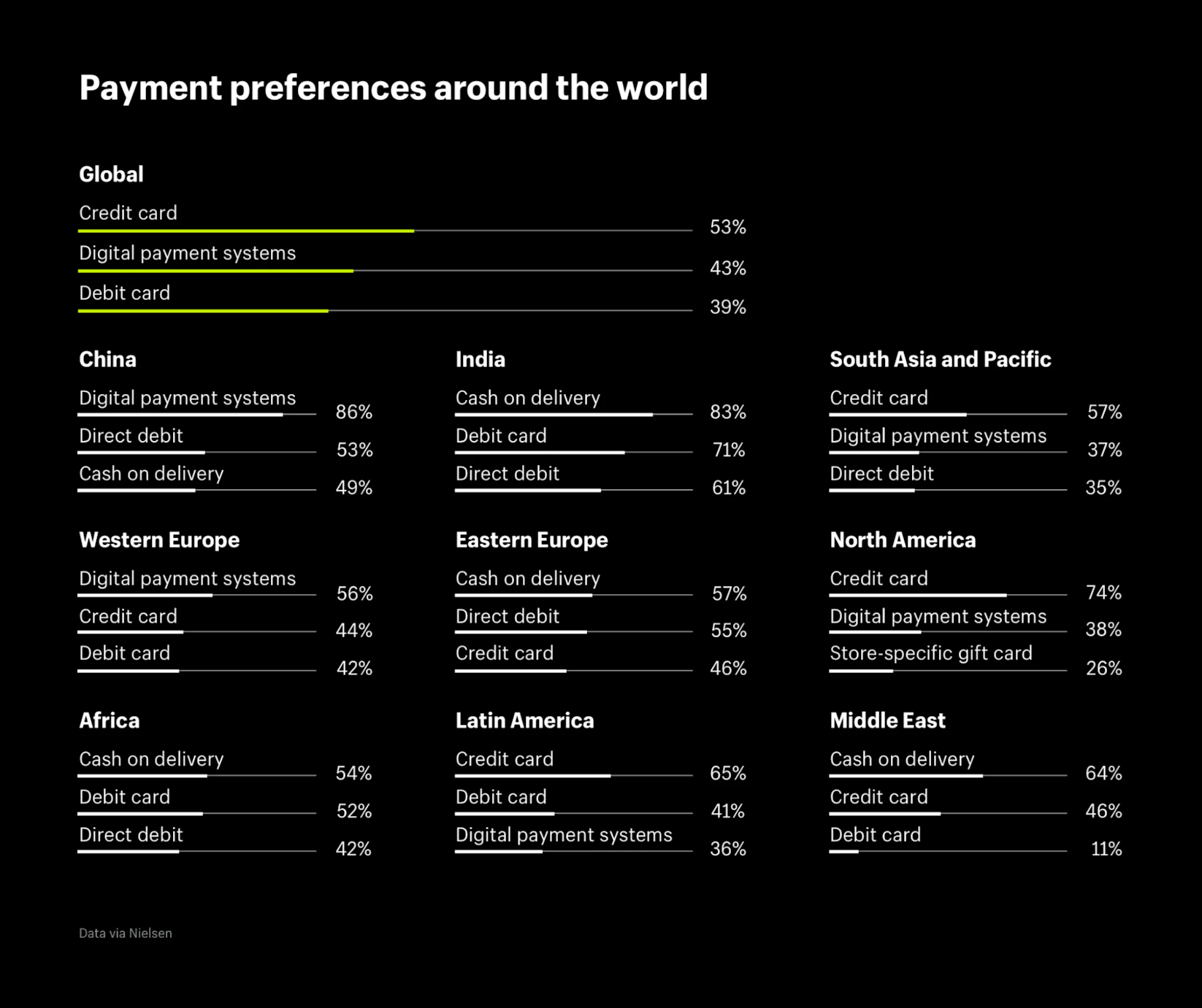
Rely on these insights when localizing your ecommerce website for another region. Then, use Shopify Markets to accept the alternative payment methods your international shoppers default to.
DTC brand Simba went through this process when expanding globally. Founder and co-CEO Steve Reid says, “In the UK, a good percentage of what we do obviously goes through credit cards, debit cards, and so forth. In terms of the checkout in Germany, invoice after purchase (Auf Rechnung) is often the best offering.
“Without those things in place, you can look at your conversion funnels and see things are going wrong. What’s right for the UK market is not the same as in other markets.”

Product pricing
There are costs associated with selling internationally. From import duties to cross-border shipping, localize the pricing for each region to maintain profit margins. The last thing you want to do is invest time in international growth, only for you to make less profit than you do in your existing region.
Similarly, check whether resellers have agreements that restrict retail prices in foreign markets. For instance, suppliers based in Europe might limit the discount its partners can provide when expanding into the same market. Check whether you’re bound by any of these restrictions in your reseller or supplier agreements.
Moonglow shows different prices across each localized version of its site. This coincides with the shopper’s home currency—alleviating two pre-purchase sales objections while maintaining profit margins.
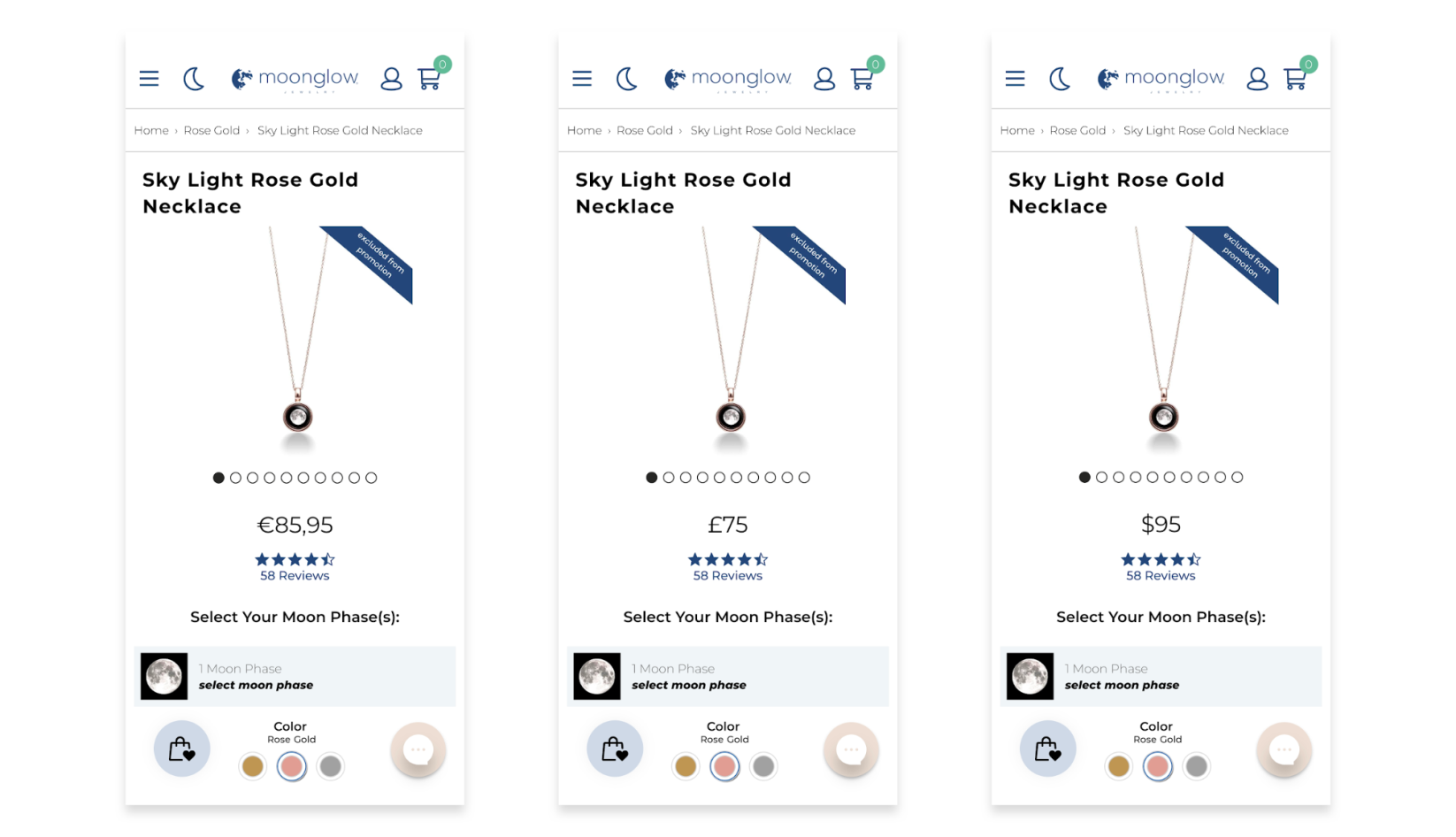
These localized prices help with personalization, too. A commissioned survey conducted by Forrester Consulting on behalf of Shopify found that 52% of consumers are significantly influenced to purchase when they’re offered personalized discounts.
Take greater control over your international pricing with Shopify Markets. If you know that orders in Brazil cost more to ship than US domestic orders, absorb that dent to profit margins with custom product prices for that market.
Language and translation
People can’t purchase from websites they don’t understand. Even if online shoppers are somewhat fluent with your main language, mental translation is an off-putting loop you’re forcing them through prior to purchasing from your online store.
Research shows that three-quarters of people prefer shopping in their native language and 60% rarely or never purchase from an English-only website. Shopify data shows a 13% relative increase in conversion when buyers were shown a store translated into their language compared to the same one in the default language. That includes:
- Navigation bars
- Product titles
- Product descriptions
- Call-to-action buttons
- Email campaigns
Paul Valentine, for example, shows this overlay to shoppers with a German IP visiting its .com domain:
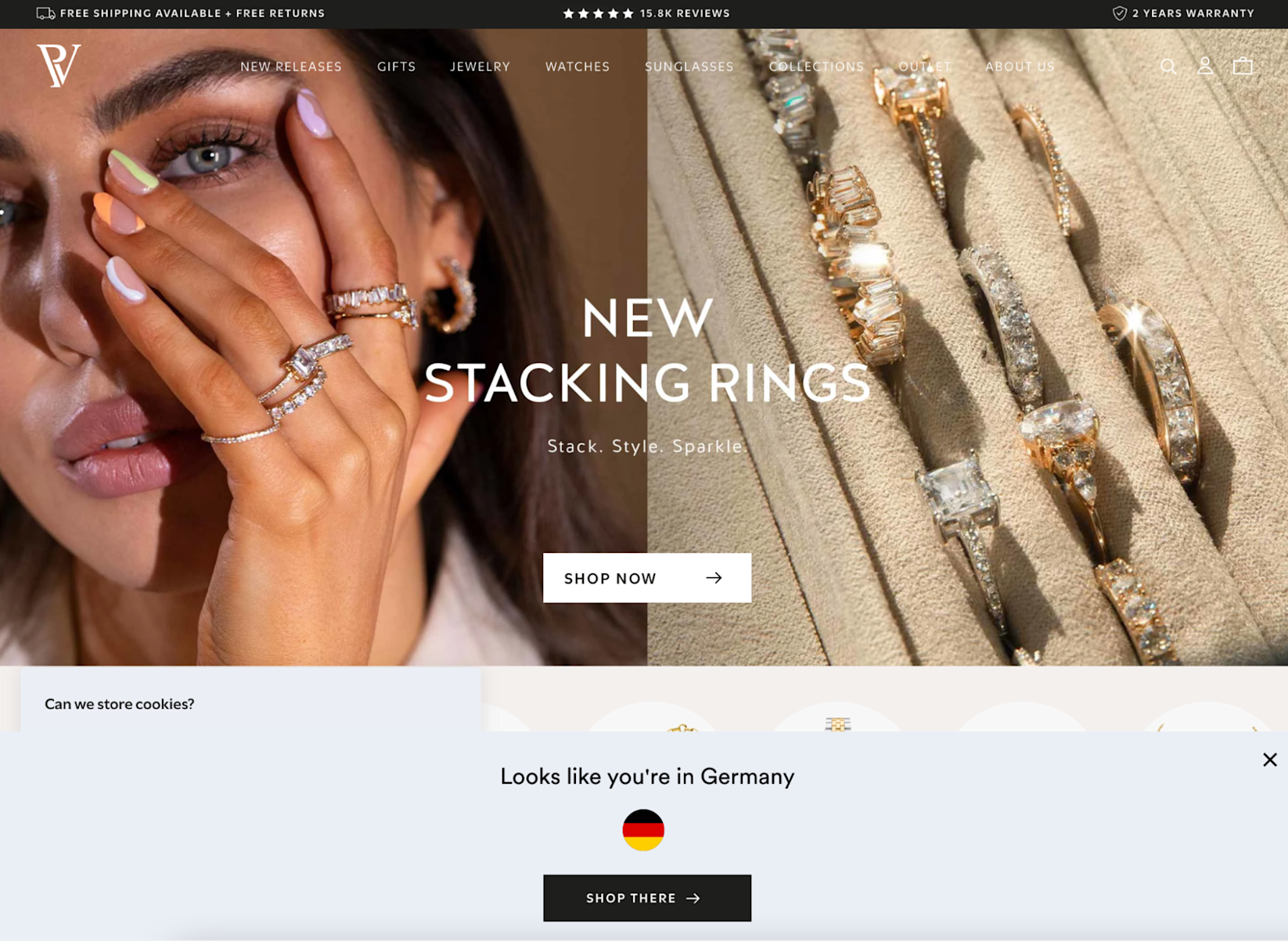
International shoppers are diverted to the localized version of its website, where content reloads in German:
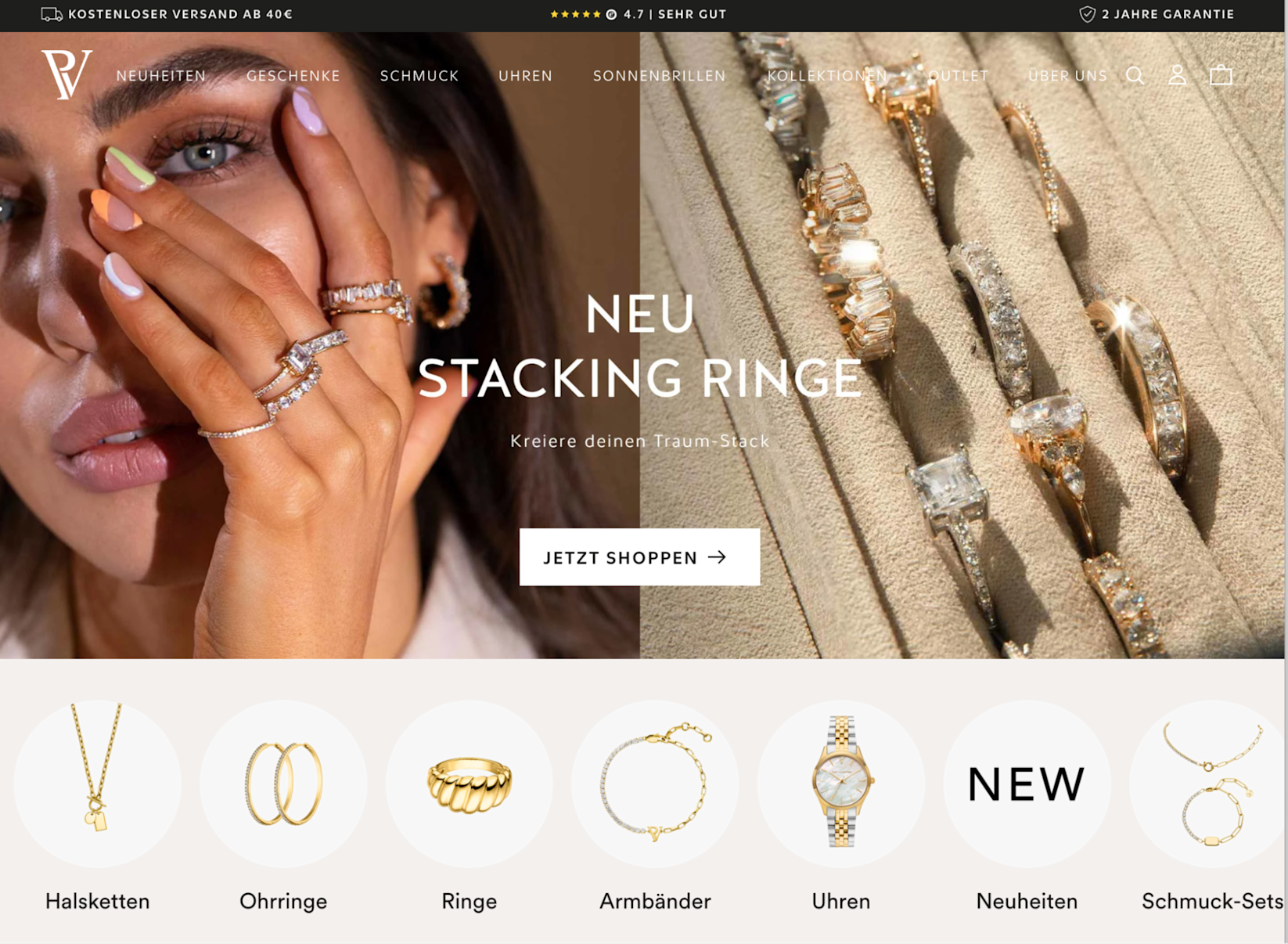
International expansion is very important for European brands, however, it also comes with a lot of challenges. We know that headless is the right solution for Paul Valentine to accelerate and grow the brand, increase localization, and continue to expand internationally.”
—Paul Franzreb, co-founder and CEO of Paul Valentine
An important clarification: Localizing the language doesn’t mean translating it word for word. Sentence structure, syntax, and grammar change from language to language. While English speakers say “red shoes,” Spanish speakers say the directly translated equivalent of “shoes red.”
“It's important to use high-quality translations that accurately reflect your brand voice,” says Robert Johnson, director of operations at My Wood Rings. “This is not a task that should be outsourced to amateur translators or automatic translation tools.”
Imagery
Ecommerce brands launching localized versions of a website often forget to update imagery. Visuals aren’t subject to translation and therefore don’t need to be localized, right? Not necessarily. Images can be interpreted differently by consumers, depending on their location.
Robert Ahlborg, co-founder of Looklet says, “We are constantly changing our personalization to stay up to date with local trends, different seasons, and various local preferences (just to name a few).
“The product imagery here in Sweden during springtime differs significantly from product imagery in the United States in the summer,” Robert says. “For example, if you take a garment like a dress, it might be styled differently depending on the weather. It's generally colder in Sweden than it is in Texas, so in Sweden, the dress might be styled with a jacket and boots. In Texas, the dress might be styled with heels and no jacket.
“This is really the next level of localization and a step toward product image personalization. Tailoring product imagery with models and styling can make all of the difference in achieving positive results."

Customer support
We’ve all heard the statistics: 93% of consumers consult reviews before purchasing products online. Almost a third are willing to spend more on online businesses with positive reviews.
When localizing, source reviews from customers in each new market you’re expanding to. Unlike translations from your native language to another, localized reviews replicate the natural voice, dialect, and language of customers in that region.
The number of product reviews published by your customers in their local language can also help to boost the amount of confidence that purchasers have in your site’s products.”
—Dan Lee, head of marketing at Sealions
No matter how hard you try, customers still need support both before and after purchasing items online. Make that easily accessible with localized content support—a tactic able to drive long-term profitability when expanding into international markets. Good customer service turns 86% of one-time clients into long-term brand champions.
“You may think of your products as self explanatory, however, it may not be so for a person whose primary language is not the same as yours, which is why we made our customer service apparatus multilingual for localization,” Yupi Alpert, founder and CEO of Noémie, says. “We understood that the various markets we touch upon have different needs that go beyond just certain item preferences or purchasing methods.”
Customer support tools like Zendesk and Gorgias offer multilingual support. Use those automation tools to scale and automate localized customer service, so you can spend more time reaching new customers.
How to localize an ecommerce website
Do market research for expansion
Time and effort goes into localizing your ecommerce store for a new market. Make sure it’s worth your time by validating that the new region will be a profitable revenue stream for your business.
You can do this through:
- Website analytics. Use Google Analytics segments to break down on-site activity by region or location. If you discover that Mexican shoppers convert 45% better than Brazilian customers, it makes sense to prioritize Mexican localization. It’s the path of least resistance to expansion.
- Customer feedback. Ask sales teams to make a note of where customers are enquiring about shipping. A large volume of potential customers asking whether you ship to Italy is a sign you should add the country to your localization list.
- Marketplace selling. Marketplaces like Amazon and eBay are seen as the arch nemesis of DTC brands. However, they already have global customer bases with existing supply chain logistics that help merchants sell internationally. Test the waters by selling on one. Monitor which country has the biggest appetite for your products.
Some of the world’s most powerful brands failed at international expansion due to their lack of research. Starbucks, for example, launched 90 new stores in Australia, only to discover it didn’t sell the type of coffee Australians grew accustomed to.
The failed international expansion cost Starbucks $105 million—a loss that could’ve been avoided with comprehensive pre-localization research.
It sounds ridiculous, but we win by listening to our customers, by only going into those markets that we believe we can execute in. We win by going back to the complete basics.”
—Steve Reid, a Simba founder and its co-CEO
Automatically display the localized website to international visitors
It’s all well and good to have a localized version of your online store. But if customers don’t know it exists, international shoppers who are willing to purchase a product will be put off by unfamiliar languages or currencies.
Shopify’s Geolocation app takes care of guiding your users to the correct experience based on their IP address, location, and browser preferences. It’s used by sites like Fashion Nova to divert international shoppers visiting its .com domain toward a localized subdomain.
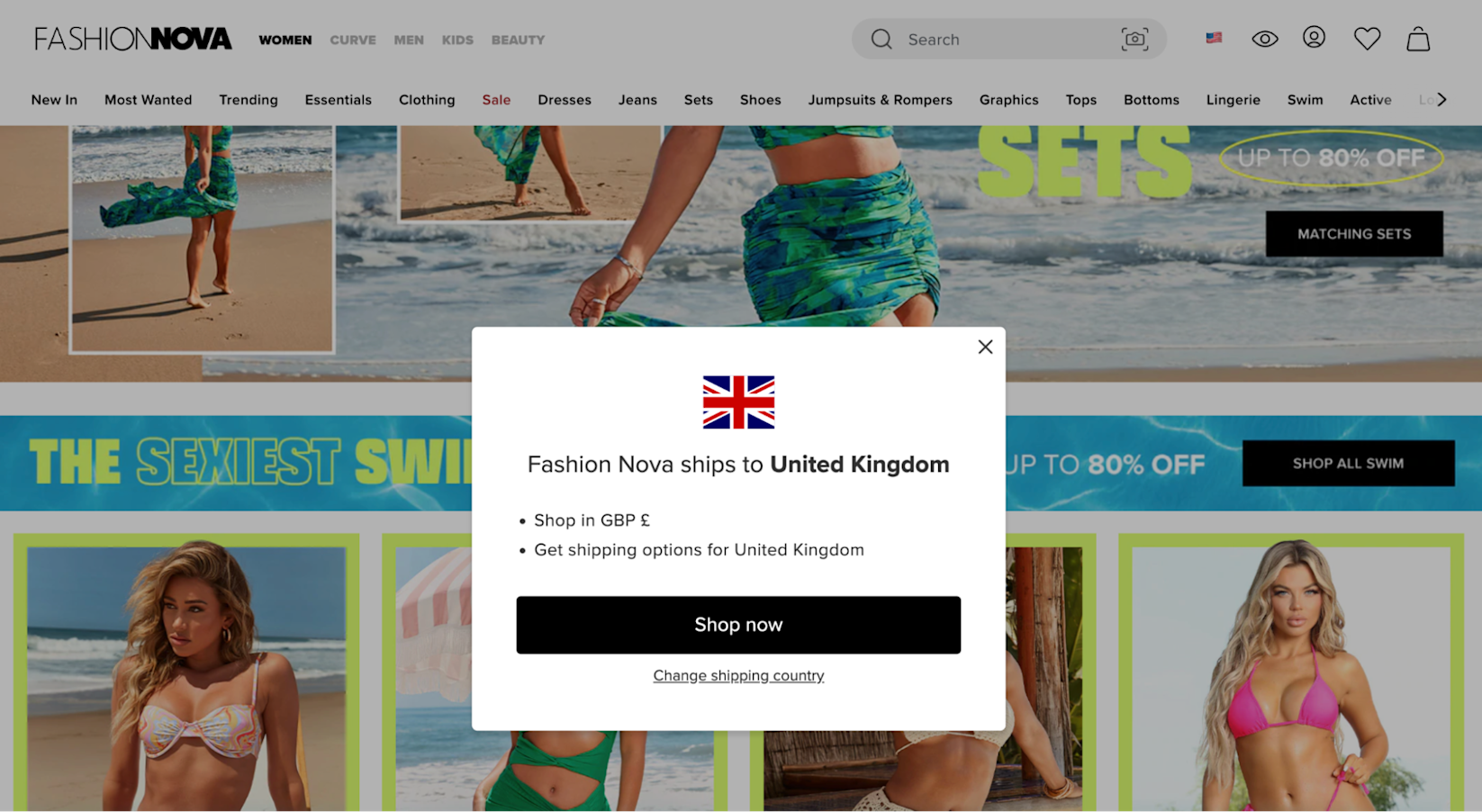
Showcase shipping, duty, and import taxes
Nobody likes unexpected bills. Prevent forcing them on unknowing international shoppers by showcasing extra costs associated with their cross-border shipments, such as:
- Shipping fees
- Duty, import, and export taxes
- Tax obligations (for example, European consumers are subject to value-added tax VAT on items they purchase through your online store.)
Failing to disclose these extra costs upfront causes almost half of online shoppers to exit their online cart. It’s the biggest turn-off customers contend with when purchasing items from international shoppers, even through localized sites.
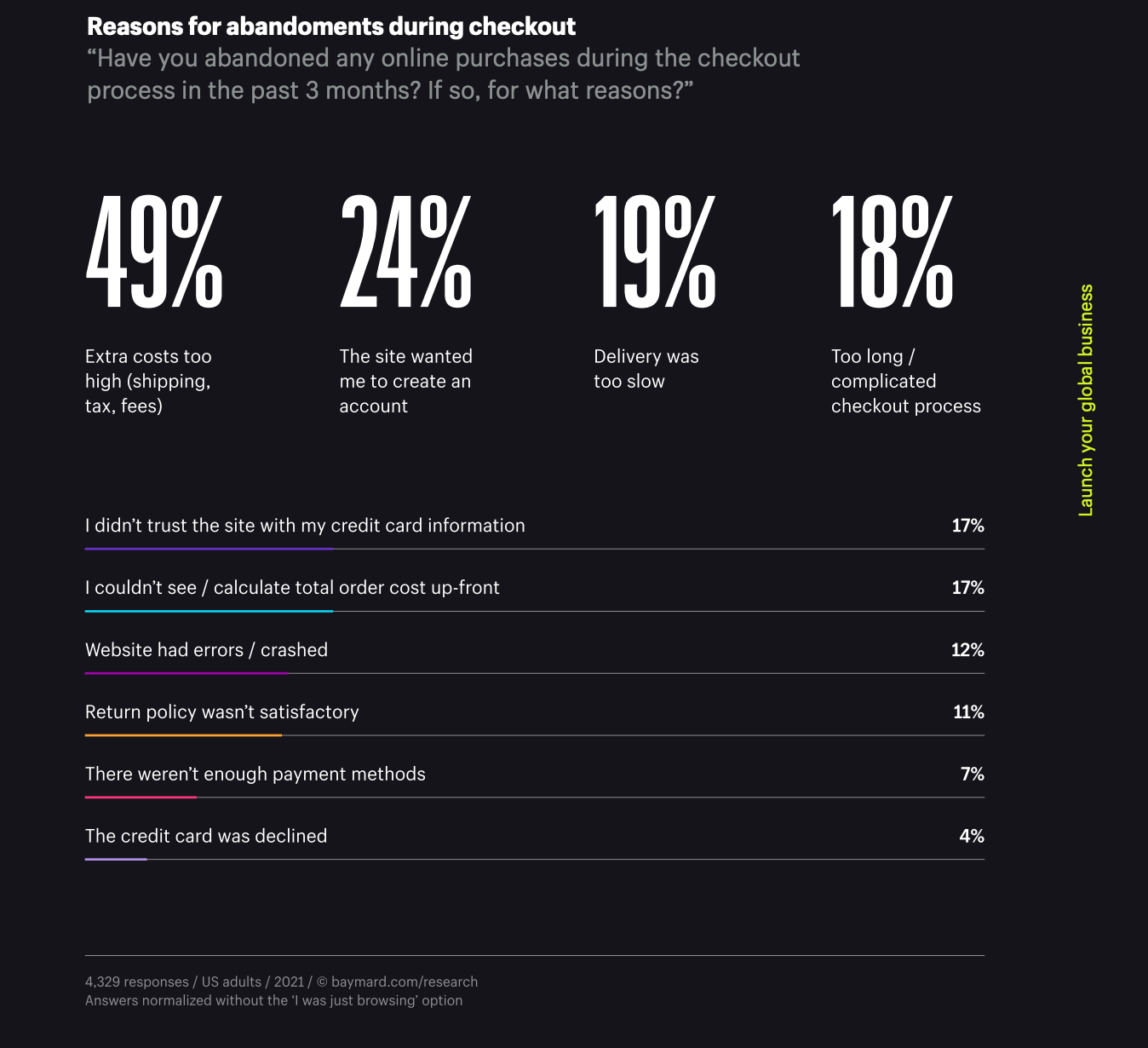
Fix this problem by absorbing extra costs into your product pricing. If you know that the total landed cost for a $60 RRP product is $50, bump up the retail price to reclaim profits and avoid bombarding cross-border shoppers with extra costs at the checkout.
It’s a price bundling tactic often used in ecommerce shipping; customers would rather spend more than pay for shipping.
Localize inventory
Don’t sacrifice customer experience just to grow international profits. Delivering less-than-stellar user experiences to cross-border shoppers and customer acquisition will be an uphill battle. People are unlikely to recommend a business they didn’t enjoy shopping with.
Shipping and delivery is arguably the biggest component of international customer service. Ecommerce giants like Amazon set the tone for same- or next-day delivery, with 58% of shoppers now expecting free next-day delivery on items they buy online.
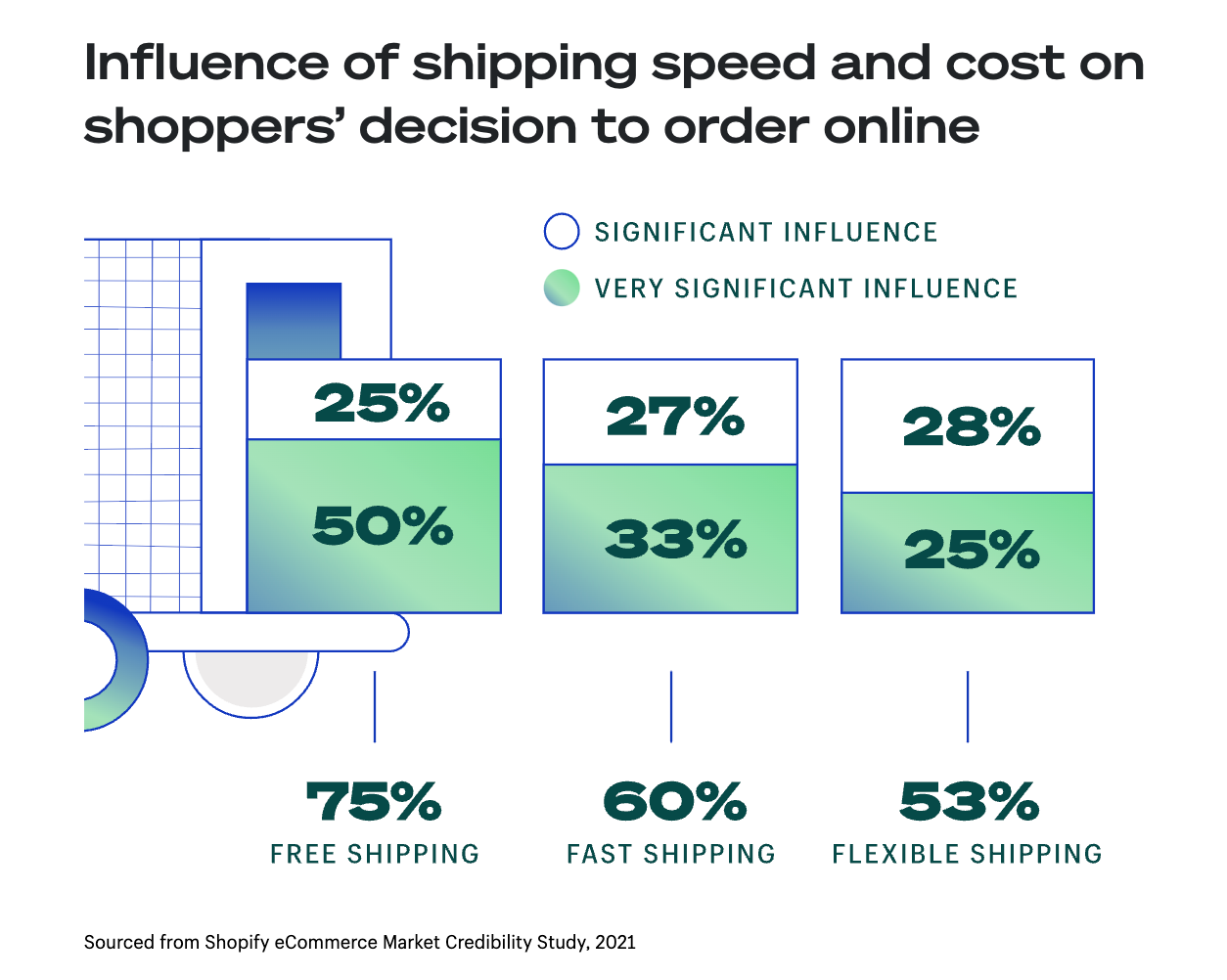
Compete with Amazon by distributing your inventory in warehouses closest to your customers, or working with a third-party logistics company with international warehouses.
Not only can you offer speedy delivery without extra costs, but regionalizing inventory increases supply chain resilience—the importance of which was proved when a single shipping container stuck in the Suez canal disrupted $60 billion in global trade.
Doe Lashes, a DTC brand that has grown from a $500 launch to a multimillion-dollar business, took this approach when localizing in new regions. Its CEO and founder, Jason Wong, says, “We look at where our customers are placing their orders from. The way we respond is to place our inventory near those cities to reduce the overall miles traveled by those packages.
“We’re now stocking inventory outside of the country for our international customers, just to reach them faster. We have a warehouse in China and that helps us reach Australia and the whole Southeast Asia region.”
Test the process
“Once you’ve localized your website, it’s important to test it to make sure everything is working properly,” says Austin Dowsy, CEO of Aimvein. “This includes checking for broken links, misspellings, and incorrect translations.”
For even more rigorous testing, have someone in the new region place a test order on the localized version of your site. Fix any errors that weaken the customer experience, such as incorrectly translated email order confirmations or missing payment methods preferred by shoppers in that new market. You’ll fix obvious errors before unforgiving customers are turned off by them.
Finally, run A/B tests to find the best converting elements on your localized sites using tools like Shogun, Dexter, and ShipScout. Best practices that convince English shoppers to convert might not be the same for German speakers.
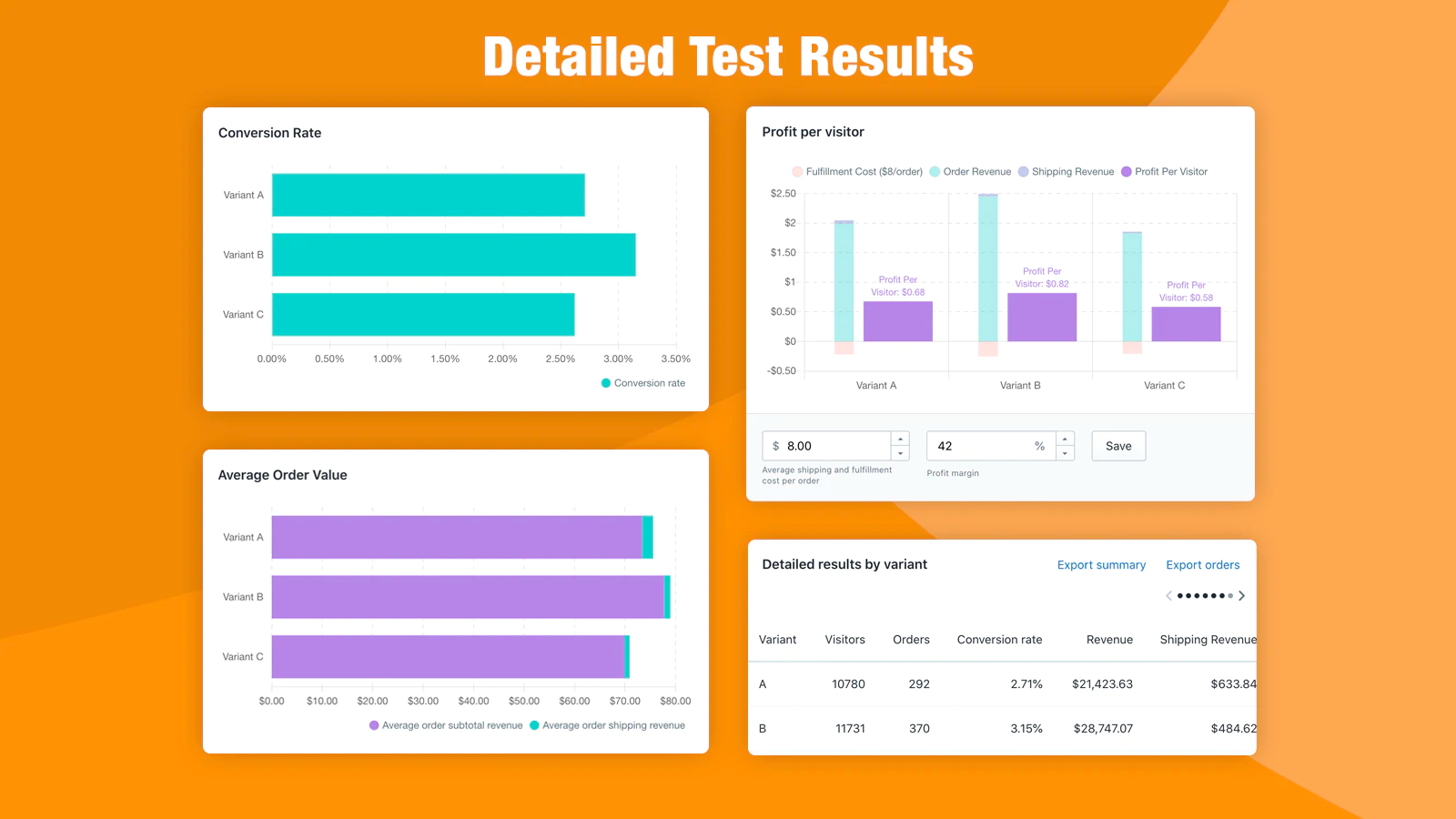
Ecommerce localization best practices
Be consistent with branding across localized sites
Localized versions of your website should make it obvious that it’s owned and operated by your brand.
People trust brands that are familiar to them, hence why making major changes to your logo, brand colors, or messaging can be confusing to international shoppers. You never want them to question, “Does this website really belong to the brand I trust? Or is it a scam by a replica company looking to take my money and run?”
When it comes to web design, less is often more. This is especially true for localization, as you want to make sure your website is easy to navigate and understand.”
—Austin Dowsy, CEO of Aimvein
Consult your brand style and ensure your logo, brand messaging, and personality is obvious across all subdomains. The English and French versions of Huel’s site, for example, make it clear that each website belongs to the brand. Customers who love its simplistic branding see the same elements across each localized site.
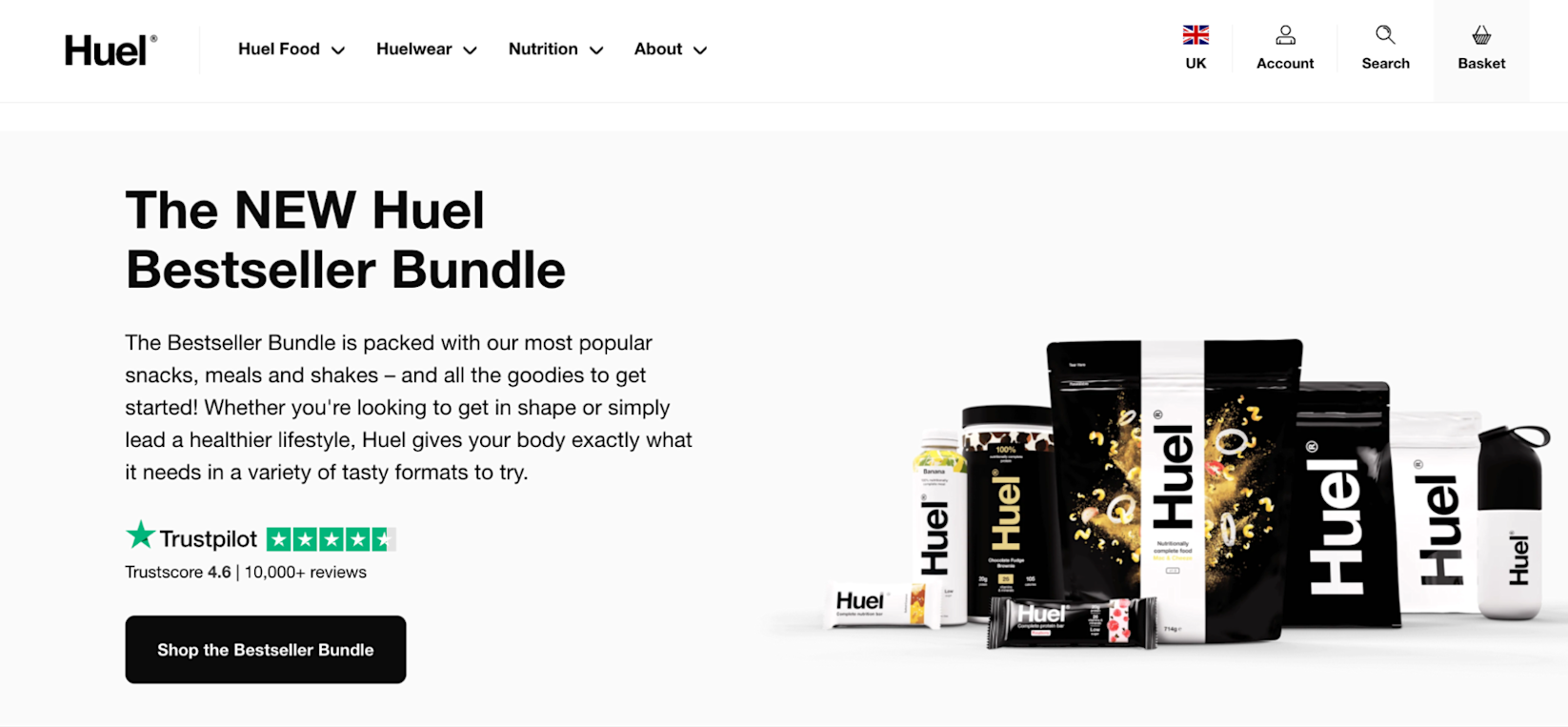
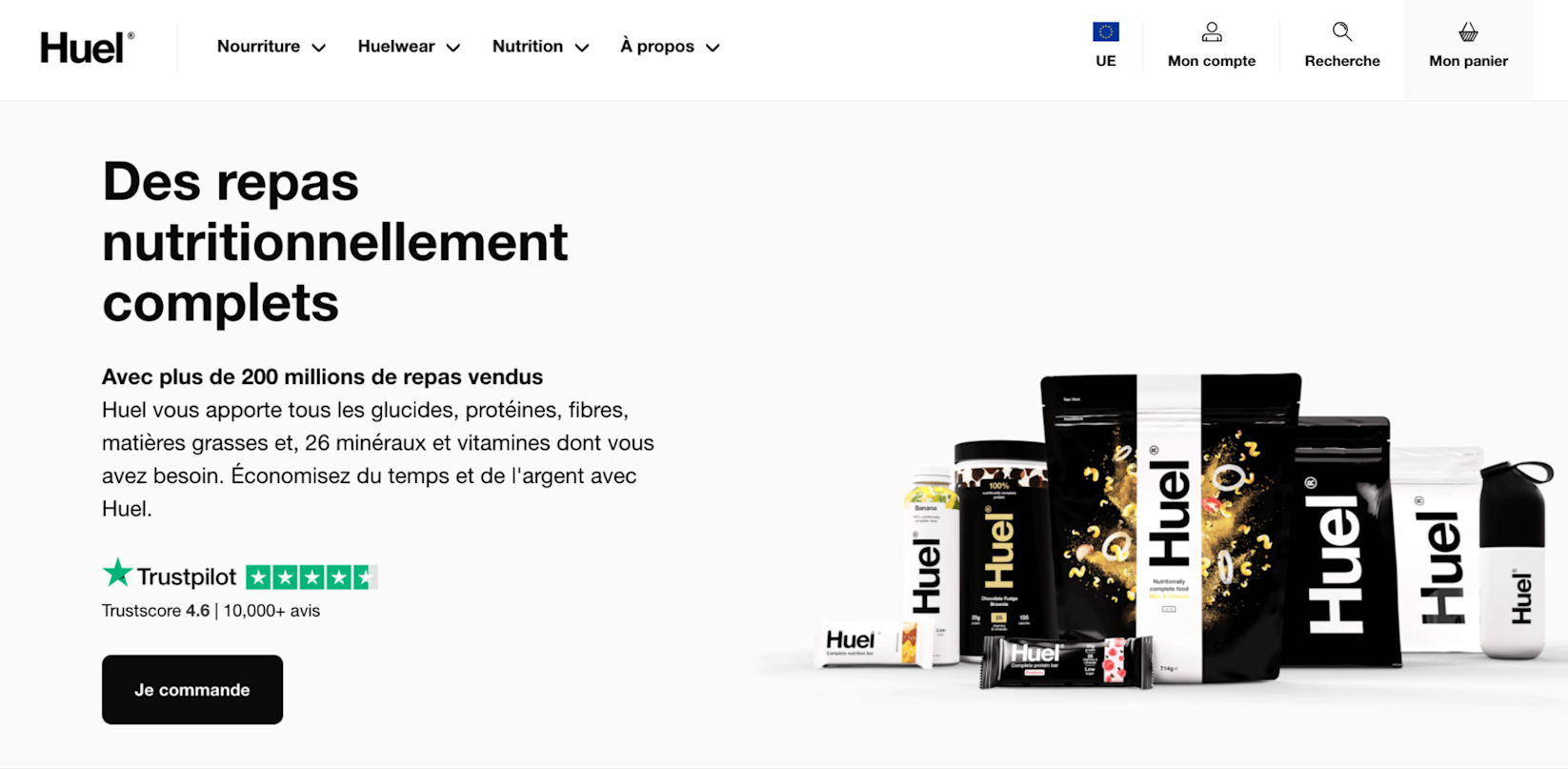
Do keyword research to find local search terms
Regardless of where you’re expanding to, your target audience are using search engines to discover new products. Google is the first choice for US and UK consumers, whereas Baidu is the preferred search engine for Chinese shoppers.
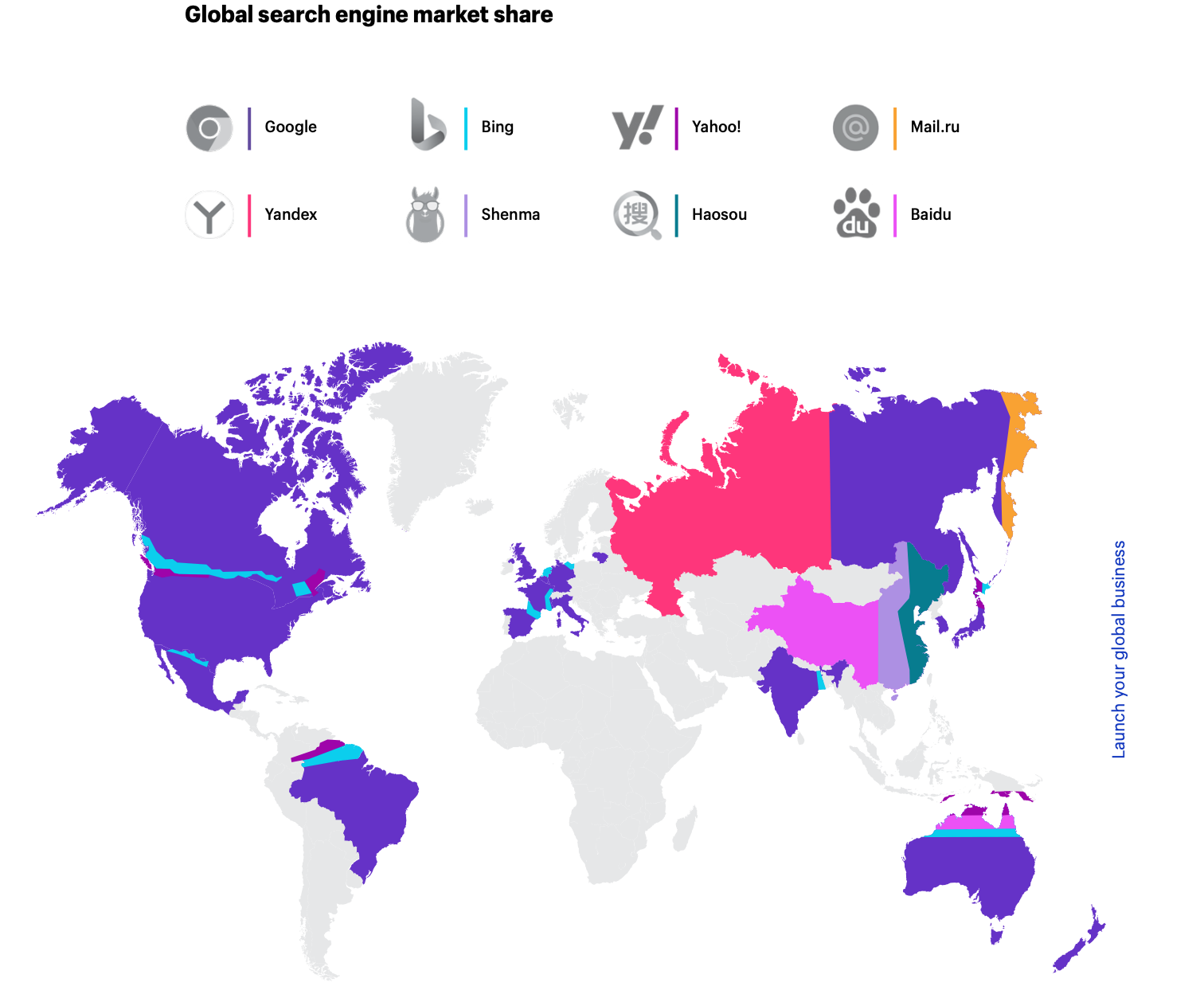
Shopify Markets handles the SEO infrastructure needed to meet shoppers in each region you’re targeting. Chinese shoppers will see brand.cn in search results through their preferred search engine, whereas US shoppers see the .com version of the same page.
One thing to note is that keyword search terms differ by country. European shoppers search for “trainers”; American counterparts search for “sneakers.” Edit the page content, meta tags, and image alt text to include these regional terms.
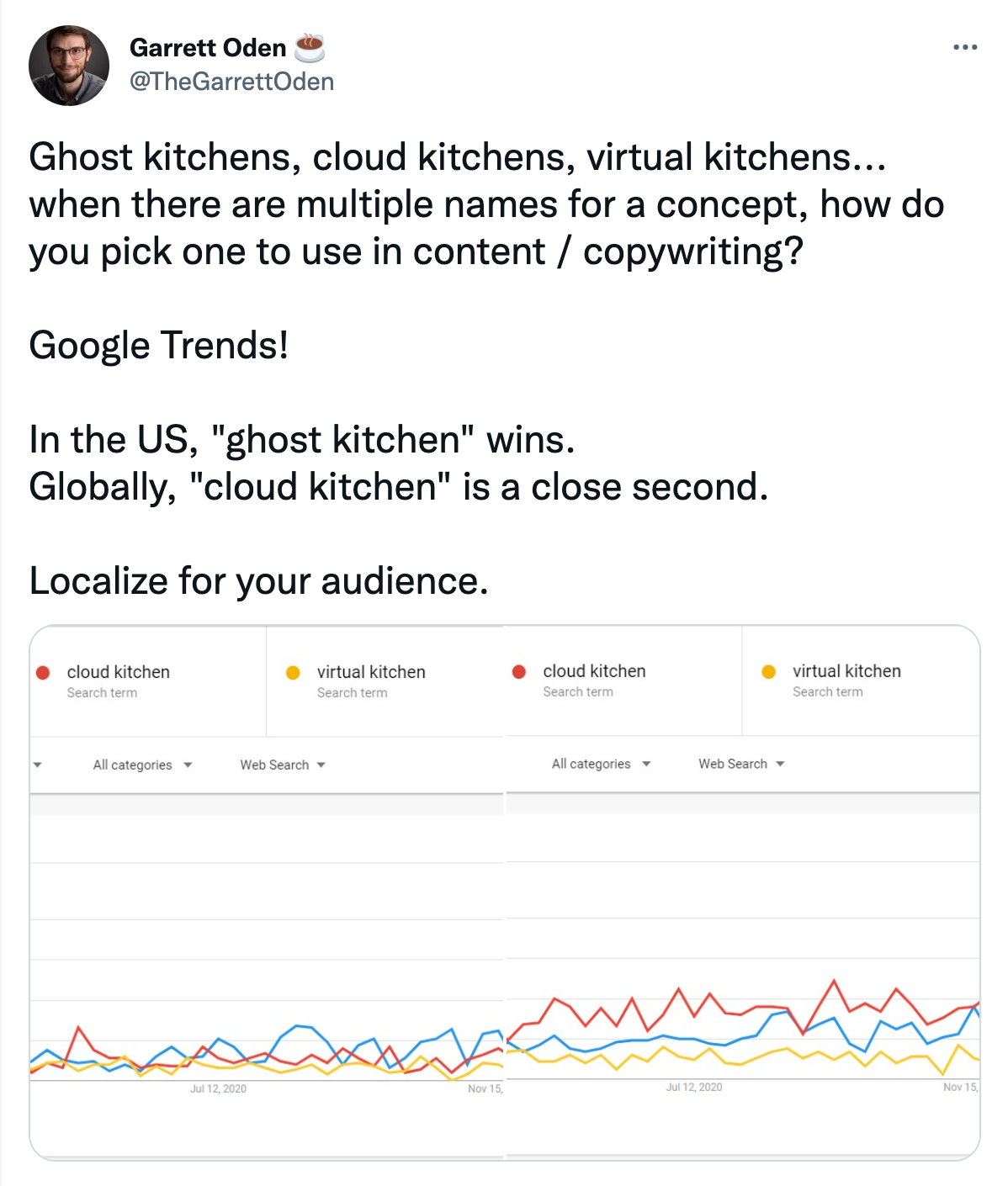
Consider cultural differences
People in each country have cultural differences that impact shopping habits and experiences. For instance:
- Sizing: A woman’s UK size 6 shoe is size 8 in the US.
- Languages: The Arabic language is read left to right, unlike English, which is read right to left.
- Colors: Purple symbolizes wealth in the Middle East, but is associated with mourning in Latin America.
- Addresses: Streets in Japan don’t have names, unlike most Western countries.
Cultural differences can be vast—many of which aren’t obvious to people who don’t live in the region. Take Simba, for example, who realized that unlike most of the Western world, people in Germany sleep on single beds pushed together. The brand updated product imagery on its localized ecommerce store to reflect this.

Uncover these cultural differences by researching your target market. The more data you have about your potential customers and their daily habits, the better you can personalize the localized version of their site.
Use an international holiday calendar
Black Friday Cyber Monday is the busiest shopping weekend for global shoppers. In 2021, people spent a total of $9 billion on Black Friday and $10.8 billion on Cyber Monday.
As you expand, consider other festivities that customers in your target market celebrate—those with the power to influence sales. An international marketing calendar with key dates best positions your localized store to take advantage of these orders.
You can take advantage of the local holiday revenue streams like Singles Day in China, Diwali in India, Ramadan in the Middle East, Cyber Monday, Black Friday, etc.”
—Jack Klauber, founder and CEO of Everyday Dose
Let’s put that into practice and say you’re a US company with a localized website for Italian shoppers. Add the following dates to your calendar and run social media marketing campaigns around each to capitalize on the festivities:
- Epiphany Day: January 6
- Liberation Day: April 25
- Ferragosto: August 15
- All Saints’ Day: November 1
How Shopify Markets helps with ecommerce localization
Take the headache out of international commerce with Shopify Markets, a cross-border management tool that helps you localize your ecommerce store from a single dashboard.
You can:
- Showcase product prices in more than 130 global currencies
- Manage subdomains and subfolders without cannibalizing search presence
- Translate your website using third-party translation apps
- Accept alternative payment methods that are popular in your target countries
- Collect duty and import taxes at checkout
“We got an invitation to try Shopify Markets from Shopify and jumped at the chance,” says Ewa Sandhu, managing director at Catwalk Wholesale. Since using its suite of localization tools to personalize shopping experiences for international shoppers, the brand “doubled sessions which in turn helped improve our conversion rate.”
Ecommerce Localization FAQ
What is ecommerce localization?
Ecommerce localization is the process of translating an online store into a new language and culture. It is to ensure a store caters to the customers in a specific region.
What is a localization example?
An example of localization in ecommerce is when a store built in English for Americans is localized in French for those customers living in the France region. To localize, the store will do research around what French customers call certain products and services.
Why should an ecommerce store consider localization?
Ecommerce stores should consider localizing their sites for several reasons. Localization helps merchants grow into new markets, create personalized experiences, and reduce customer support issues.
